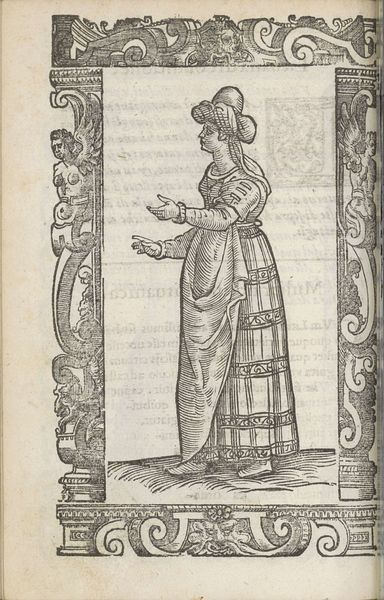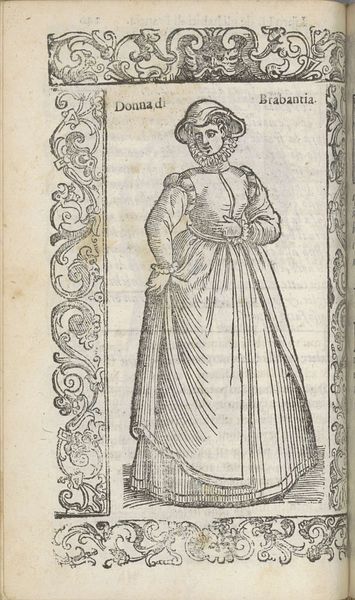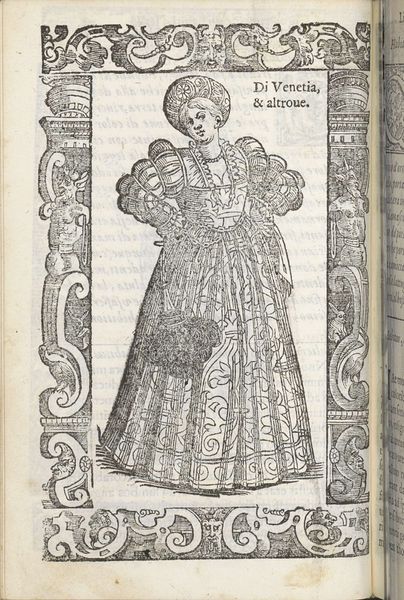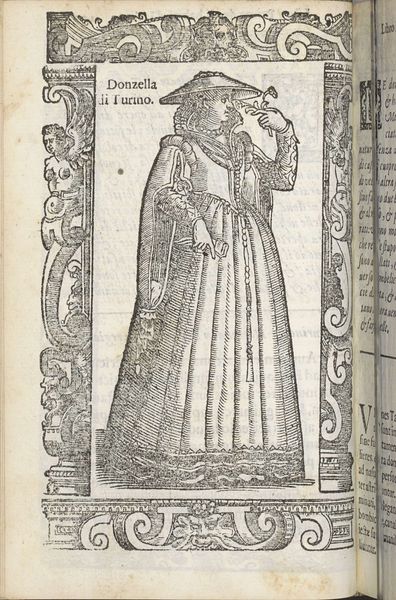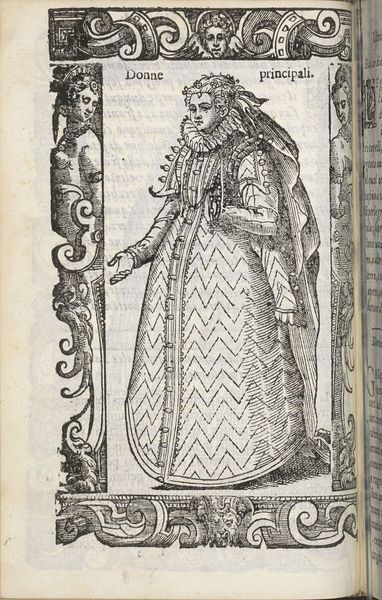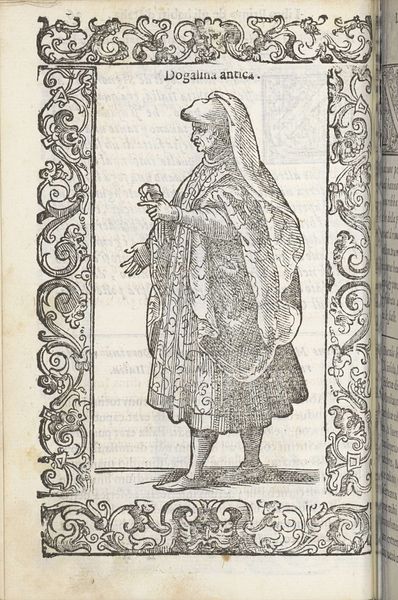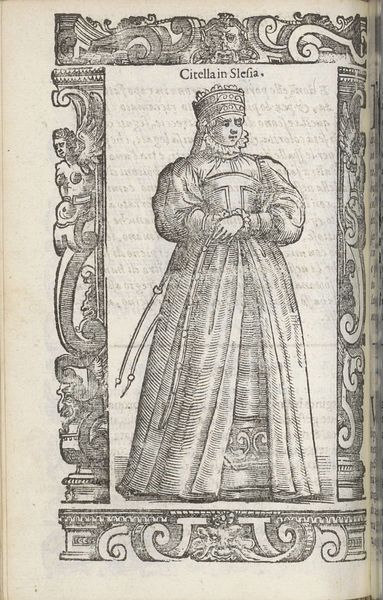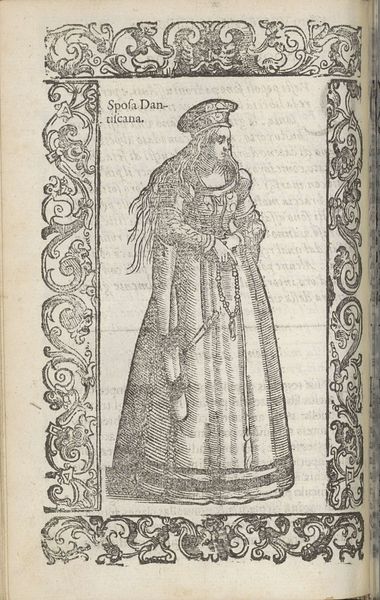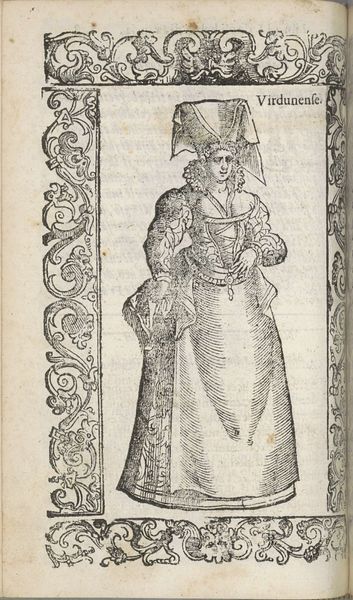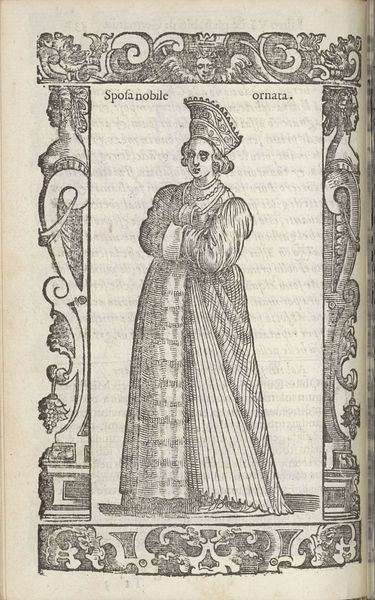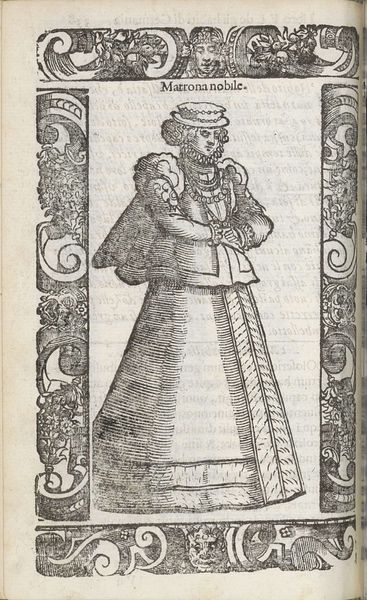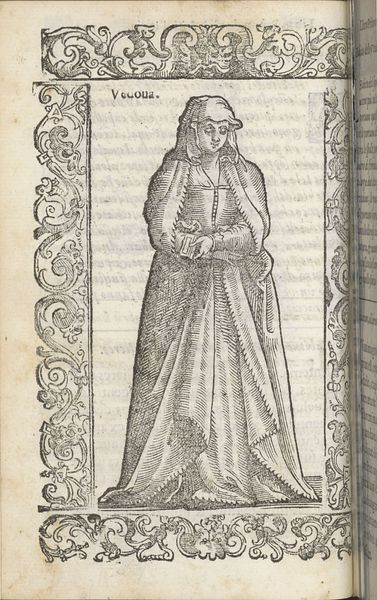
print, engraving
#
portrait
# print
#
pen sketch
#
mannerism
#
northern-renaissance
#
engraving
Dimensions: height 167 mm, width 125 mm
Copyright: Rijks Museum: Open Domain
Curator: This is an engraving called "Nobile Coloniense," dating from 1598, attributed to Christoph Krieger. What strikes you immediately? Editor: The tight linearity against the decorative flourish of the frame. All of that hatching and precise, delicate engraving gives the piece a somewhat stiff formality, even a constrained feeling. Curator: I find that constraint interesting because the image likely held a very specific social meaning. The subject’s elaborate costume, especially the headwear, would have clearly signaled status and belonging within the Colonia, or Cologne, society of the time. Clothing then functioned as a visual language. Editor: True. And speaking of language, I'm curious about how the visual vocabulary shapes our reading. Look at the dress—those rigorously parallel lines emphasize its volume and shape, almost reducing the figure to geometric forms. The textures read almost like mathematical notations. Curator: That structured representation emphasizes her role within a structured society. But let's consider the act of being portrayed. By commissioning this print, she and possibly her family broadcasted an identity and allegiance—perhaps asserting lineage or defending social position. Editor: I see your point. The portrait flattens individual character into a symbol of something larger— a family history or local identity. Curator: The surrounding frame enhances this symbolic intent; the mythological creatures almost act as heraldic supporters of her status. Such visual framing continually reminds us that the subject embodies ideals and traditions. Editor: It makes you consider the economics of such self-fashioning. Every deliberate design choice—the clothing, the style, the artistic framing itself—suggests someone curating an image meant for public viewing. It is less portraiture and more designed statement. Curator: It really does highlight how portraiture isn't just capturing a likeness, but performing an identity that's deeply embedded in a complex network of cultural values. Editor: Precisely! Looking at it this way highlights the way in which images are designed to communicate complex socio-economic information to audiences in particular locations and points in history.
Comments
No comments
Be the first to comment and join the conversation on the ultimate creative platform.
